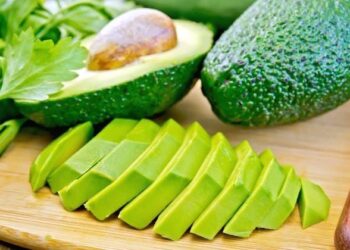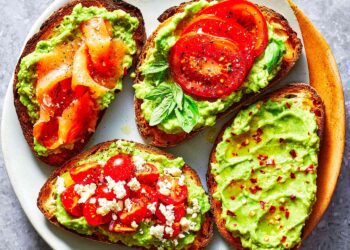Am going to give you Grandma’s Homemade Secret Weapon of Soup hacks purely from Egg Noodles. A Family Tradition with a Global Twist.
Have you ever wondered why some noodles turn mushy after a few minutes in soup, while others hold their shape for hours? The answer lies in a little something called an egg combined with noodles to make egg noodles recipe.
Today, i will be teaching you about egg noodles, a versatile staple that’s graced tables for centuries across the globe.
But before we get cracking on egg noodles recipe, let’s crack open a surprising fact: egg noodles are distinct from their regular pasta counterparts.
Unlike the water-based dough used in most store-bought pasta, egg noodles boast a richer flavor and texture thanks to the incorporation of eggs. This unique ingredient adds a new protein layer, creating a springier noodle that stubbornly resists turning to mush, even in hearty stews.

Now, this egg noodles recipe isn’t just about deliciousness; it’s about tradition. My family, with roots in Germany and Ukraine, has cherished these noodles for generations.
Every family gathering overflows with bowls of these golden strands, ready to soak up rich gravies and broths. The beauty of this recipe lies in its simplicity. No fancy equipment is needed, just a few pantry staples and some love for kneading.
Here’s where my personal twist comes in. Forget the tedious rolling pin! We shape our noodles directly in our palms, creating oblong strips that land straight into the boiling water.
It’s a time-saving technique passed down from the grandmothers and it yields perfectly imperfect noodles that add a touch of rustic charm to every dish.
But feel free to embrace your inner artisan! If you prefer a more uniform look, roll out the dough and slice it into your desired width. This method might take a little longer, but the end result will be picture-perfect noodles.
No matter your shaping method, the reward is the same: a comforting bowl of homemade egg noodles recipe goodness. So ditch the store-bought pasta and embark on a culinary adventure with these versatile egg noodles.

Key Advantages of Egg Noodles:
- Enhanced Texture: Eggs introduce a unique protein element that strengthens the noodle structure, preventing them from becoming mushy, even in long-simmering broths.
- Richer Flavor: The incorporation of eggs adds a subtle depth of flavor, elevating any dish they grace.
- Increased Nutritional Value: While slightly lower in protein than traditional pasta, egg noodles boast a boost of vitamins and minerals like calcium, magnesium, and iron.
They’re perfect for soups, stir-fries, or even dressed simply with butter and herbs. Let’s get cooking!
Egg Noodles Recipe Ingredients:

- 2 ½ cups all-purpose flour
- 1 pinch salt
- 2 large eggs, beaten
- ½ cup milk
- 1 tablespoon butter
Instructions:
- In a large bowl, whisk together flour and salt. Add the beaten eggs, milk, and butter. Stir until a shaggy dough forms.
- Transfer the dough to a lightly floured surface and knead for 5 minutes, or until smooth and elastic. You can also use a dough hook attachment on your electric mixer for this step.
- Cover the dough with plastic wrap and let it rest for 10 minutes at room temperature.
Shaping the Noodles:

- Grandmother’s Way (Palm Cut): Divide the dough into two portions. Roll each portion into a long snake-like shape. Using a sharp knife, cut diagonal strips directly into a pot of boiling salted water.
- Artisan Way (Rolling Pin): Roll out the dough on a lightly floured surface to a thin sheet (about 1/8 to 1/4 inch thickness). Fold the dough over itself a few times, then slice it into thin strips of your desired width. Unfurl the noodles and cook them in a pot of boiling salted water.
- Cook the noodles for 3-5 minutes, or until al dente (tender but still firm to the bite). Drain the water and toss the noodles with your favorite sauce or serve them in soup or broth.
Nutritional Value (per serving):
- Calories: 206
- Fat: 4g
- Carbs: 35g
- Protein: 7g
- Calcium: 12mg (almost twice the amount in regular pasta!)
- Other nutrients: Magnesium, Iron, Phosphorus, Niacin, Folate

- Fresh pasta cooks much quicker than dried pasta, so keep an eye on it while it boils.
- You can add a teaspoon of olive oil to the dough for extra richness.
- Leftover cooked noodles can be stored in an airtight container in the refrigerator for up to 3 days.
For those seeking efficiency without sacrificing authenticity, a time-saving tip awaits. Rather than laboriously slicing the noodles flat, roll the dough into a log before cutting. This not only streamlines the process but also ensures uniformity in shape, promising a picture-perfect bowl of noodles every time.
As we savor the fruits of our labor, let’s not forget to celebrate the nutritional virtues of egg noodles. While they bear similarities to conventional pasta, egg noodles offer a subtle yet distinctive flavor profile thanks to the addition of eggs.
Moreover, they boast a nutritional edge, with lower calorie content and a richer array of essential nutrients like calcium, iron, and folate.
Originally posted on April 11, 2024 @ 1:49 am






















